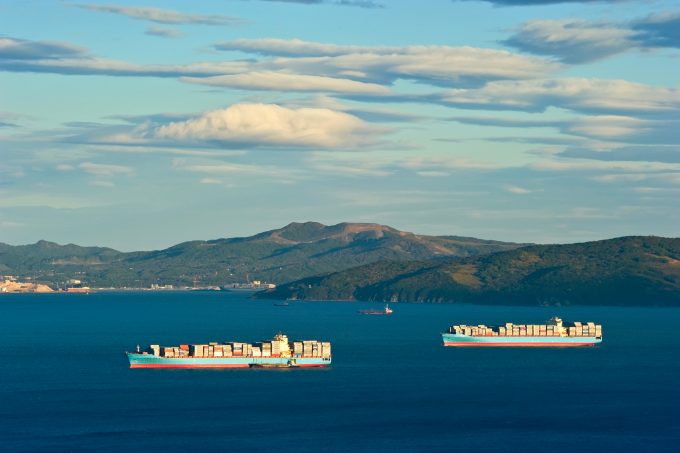Maersk Frankfurt heads for open water as container fire subsides
Maersk Frankfurt, the newbuild box ship that suffered a possible electrical fault and subsequent container ...
TFII: SOLID AS USUALMAERSK: WEAKENINGF: FALLING OFF A CLIFFAAPL: 'BOTTLENECK IN MAINLAND CHINA'AAPL: CHINA TRENDSDHL: GROWTH CAPEXR: ANOTHER SOLID DELIVERYMFT: HERE COMES THE FALLDSV: LOOK AT SCHENKER PERFORMANCEUPS: A WAVE OF DOWNGRADES DSV: BARGAIN BINKNX: EARNINGS OUTODFL: RISING AND FALLING AND THEN RISING
TFII: SOLID AS USUALMAERSK: WEAKENINGF: FALLING OFF A CLIFFAAPL: 'BOTTLENECK IN MAINLAND CHINA'AAPL: CHINA TRENDSDHL: GROWTH CAPEXR: ANOTHER SOLID DELIVERYMFT: HERE COMES THE FALLDSV: LOOK AT SCHENKER PERFORMANCEUPS: A WAVE OF DOWNGRADES DSV: BARGAIN BINKNX: EARNINGS OUTODFL: RISING AND FALLING AND THEN RISING

Despite the Asia-Europe trade experiencing one of the worst starts to a year, in terms of both volumes and freight rates, since the financial crisis, there could be cause for optimism for carriers.
Speaking at the TOC Container Supply Chain conference, which began this morning in Singapore, Maersk Line’s Asia chief executive, Robbert van Trooijen, said there was growing evidence that recent declines on the trade were set to reverse.
Last year, container volumes from Asia to Europe fell 4%, while the first quarter of this year saw them decline 6% year-on-year. Maersk believes one of the reasons why volumes have been so weak over the past 15 months is European retailers’ strategy to run down stocks.
The company expects this trend to reverse as the year progresses.
Mr van Trooijen told delegates: “The retail industry in Europe spent much of last year de-stocking, but our economists expect that there will be some re-stocking later this year, and we think the trade may well rebound.
“We do see some positive trends in 2016, and we think it [the trade] may surprise us in terms of volumes over the remainder of the year,” he added.
He predicted that this would likely lead to an increase in ocean freight rates, which he described as “unsustainable” and which would see carriers unable to protect the supply chain’s integrity in the second and third quarters of the year. Yesterday Maersk announced a $550 per teu general rate increase for 1 May.
Jim Lim, senior manager of transport excellence, procurement and global logistics at Applied Materials, agreed: “The heyday of lower rates for customers is over – these rock bottom rates will be a thing of the past.
“As Europe gradually exits recession, I think the worst will probably be over for carriers.”
Mr van Trooijen conceded that one reason why rates had fallen to such desperate levels was the vicious circle created by lines ordering large numbers of ultra-large container vessels (ULCVs), increasing shipping capacity.
“Excess capacity levels have led to a vessel which is 95% full being unable to make money and, in some cases, vessels 99% full are losing money.
“In addition, there is a 20% downfall – bookings made and the containers don’t not show for the sailing – which means carriers effectively have to overbook a vessel by 20%; and if a ship isn’t full, then the sailing has to be blanked.
“And that is very different to a couple of years ago,” Mr van Trooijen added.
Mr Lim added that structural changes in global supply chains could offer new opportunities for carriers seeking cargo and possibly more balanced trades.
“There are a lot of opportunities to take advantage of nearshoring, where a lot of manufacturing is moving to East Europe, places such as Poland and Hungary, and I think shipping lines should be looking to capture more eastbound cargo.
“Carriers have invested so much in the westbound route and there are growing opportunities for them to develop their eastbound services,” he said.
Comment on this article